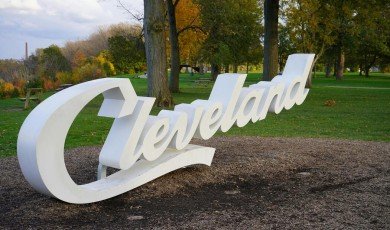Cleveland is no stranger to reinvention. From steel and manufacturing to healthcare and tech, the city has repeatedly transformed how people live and work. Now, a new wave of intelligent software is quietly reshaping everyday routines—from how residents commute and learn, to how small businesses grow and medical teams make life‑saving decisions. As these tools become more accessible, they’re opening doors for Clevelanders who want to work smarter, not harder, in every corner of the city.
For local entrepreneurs, professionals, and students, modern AI tools offer a practical way to boost productivity, creativity, and problem‑solving without needing a huge budget or a full tech department. What used to require teams of analysts or designers can now be done by one motivated person with the right platform. That shift is already changing what’s possible in neighborhoods from Ohio City to Collinwood—and the momentum is only growing.
1. Transforming How Clevelanders Work from Home and Office
Remote and hybrid work are firmly rooted in Cleveland’s employment landscape, from healthcare administration and finance to marketing and education. Intelligent platforms can now draft emails, summarize meetings, generate reports, and organize tasks in seconds. For employees balancing downtown commutes, family obligations in the suburbs, and side gigs, this means reclaiming hours each week.
Knowledge workers can offload repetitive tasks like note‑taking, data entry, and first‑draft writing. Teams scattered across Greater Cleveland—say, a manager in Lakewood and a designer in Shaker Heights—can rely on automated transcripts, meeting recaps, and project dashboards that keep everyone aligned. As more organizations adopt these systems, productivity isn’t just rising; burnout risks drop as employees spend more time on meaningful work instead of tedious busywork.
2. Empowering Small Businesses Across the Neighborhoods
From the restaurants in Tremont to the boutiques in Gordon Square, small businesses form the backbone of Cleveland’s economy. Many owners wear multiple hats: marketer, accountant, HR, and customer support. Intelligent platforms help level the playing field by providing capabilities that used to be reserved for large corporations.
Automated chat assistants can handle basic customer questions 24/7, while smart analytics tools help shop owners understand which products are performing best and when foot traffic peaks. Content generators can help local brands produce blogs, menus, newsletters, and social media posts in a consistent voice without hiring a full‑time writer. This combination of automation and insight lets small businesses expand their reach beyond their block, attracting customers from across Greater Cleveland and beyond.
3. Supporting Healthcare Innovation in the “Medical Capital”
Cleveland’s identity as a medical powerhouse is anchored by institutions like the Cleveland Clinic and University Hospitals. Intelligent systems are increasingly woven into this ecosystem, assisting with everything from scheduling and triage to diagnostic support and personalized treatment planning.
Clinical teams can use data‑driven platforms to quickly scan medical records, identify patterns, and prioritize high‑risk patients. Administrative staff can rely on automated tools to reduce paperwork, streamline billing, and cut down on scheduling errors. For patients, this can translate to shorter wait times, more accurate information, and care experiences that feel tailored rather than generic. While clinicians always make the final call, these systems can act as an extra set of always‑on eyes, helping them deliver better care more efficiently.
4. Enhancing Learning for Students and Lifelong Learners
Cleveland’s education community—from local schools and colleges to adult training programs—is experimenting with new ways to personalize learning. Intelligent tutors can provide instant feedback on essays, clarify complex math concepts, or generate practice quizzes aligned to the Ohio curriculum.
For students in under‑resourced schools, these tools can function as on‑demand homework help. College students at CSU or CWRU can use them to explore research topics, organize notes, or translate dense reading material into digestible summaries. Adult learners retraining for new careers—whether in IT, nursing, or skilled trades—benefit from study plans and interactive explanations that adjust to their pace. Used responsibly, this kind of support can narrow achievement gaps and speed up skill acquisition across the city.
5. Rethinking Transportation and Urban Living
Daily life in Cleveland is deeply shaped by how people move—from RTA buses and the HealthLine to I‑90 and I‑480. Intelligent routing tools, predictive traffic models, and smarter logistics platforms can make commuting less stressful and more efficient.
Residents can already access real‑time traffic and transit information, but newer systems go further, learning from patterns across weather, events, and construction schedules. They can suggest the best departure times, alternate modes, or park‑and‑ride options. On the city planning side, data‑driven models help officials test how route changes, bike lanes, or new developments might affect congestion and pollution before any concrete is poured. Over time, this leads to a more connected, predictable, and sustainable Cleveland.
6. Boosting Creativity in Cleveland’s Arts and Culture Scene
From the Theater District and the Rock & Roll Hall of Fame to local galleries and music venues, Cleveland thrives on creativity. Artists, musicians, filmmakers, and writers are starting to use intelligent creative tools as collaborators rather than replacements.
Musicians can experiment with new sounds or generate backing tracks in seconds. Visual artists can explore dozens of design variations, refine concepts, and prototype installations without expensive materials. Writers and marketers can brainstorm campaign ideas, titles, or storylines while maintaining their own unique voice. These tools lower the barrier to experimentation, allowing more Clevelanders to participate in the city’s cultural life and helping professionals move from idea to finished work faster.
7. Making Civic Engagement and Local Government More Accessible
Civic participation often suffers when information is hard to find or understand. Intelligent language and data platforms can help residents discover relevant city services, understand policy proposals, or analyze public data sets.
Chat‑based interfaces can guide people through applying for permits, accessing housing assistance, or reporting issues in their neighborhoods. Summarization tools can turn lengthy council documents and budget reports into plain‑language overviews. This transparency makes it easier for busy parents, shift workers, and seniors across Cleveland to stay informed and have a voice in local decision‑making.
Conclusion: A Smarter, More Inclusive Future for Cleveland
Intelligent software is no longer confined to research labs or big tech hubs—it’s becoming part of daily life in cities like Cleveland. As it spreads across offices, hospitals, classrooms, studios, and public services, the city stands to gain a more efficient, creative, and inclusive future.
The key will be thoughtful adoption: training people to use these tools responsibly, addressing privacy and bias concerns, and ensuring benefits reach every neighborhood—not just a select few. If Cleveland continues its tradition of gritty innovation and community‑driven progress, these emerging technologies can help residents spend less time on drudgery and more time building the vibrant, connected city they want to live in.







